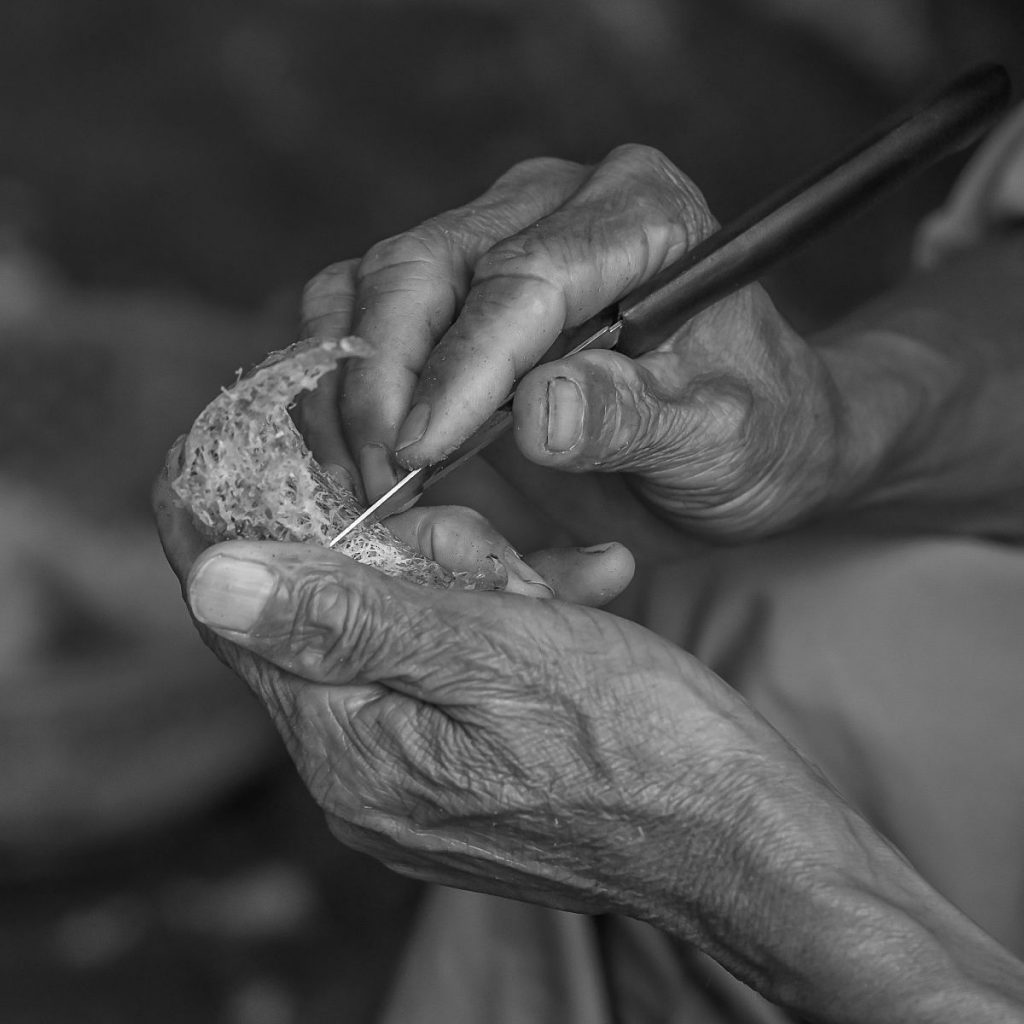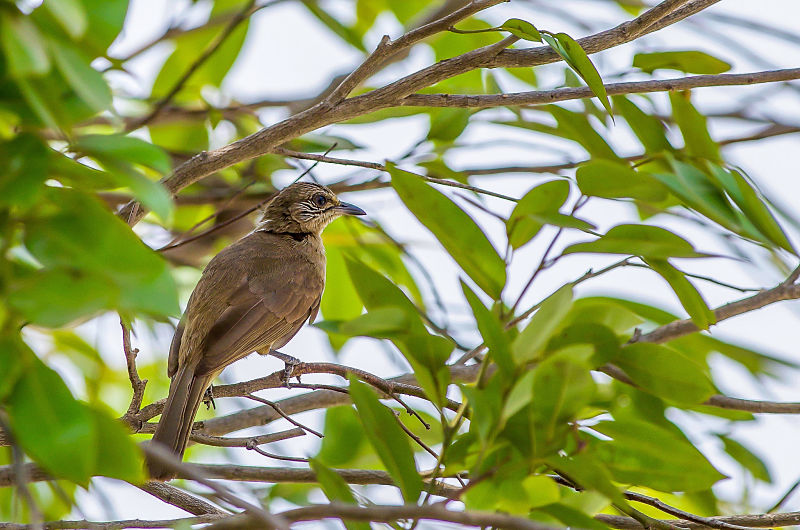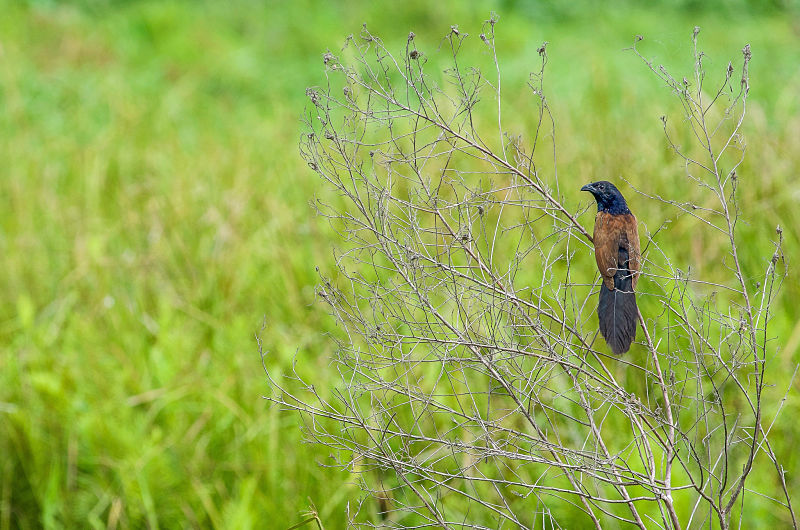Look in Your Own Backyard
For those who want to see wild birds and go deeper into nature’s wonders, the common advice is (especially in Vietnam): ‘Go far from here! Find a National Park, a nature reserve or the rainforest wilderness of the mountains!’
Well, although that kind of counsel has some merit and would really increase your chances to meet some rare species, it would be a shame to think that nature only hides far from cities and villages.
Yes, wildlife in Vietnam has learnt its lesson and knows that hunters, and death, can be really near when mankind is around. But a little patience and a different way of looking around may bring some surprises.
A walk in the morning in the quiet streets of Hoi An can easily turn into a discovery of local, less realized, treasures. Nature is also here, in the small gardens, in Hoi An’s magnificent trees, hidden behind the leaves, along the river and in the rice fields. Even the famous, yellow-colored walls of the Old Town play their part as hosts of local biodiversity.
House sparrows are almost everywhere and, as their name implies, love becoming your roommates if they can find some quiet place under the roof or in a simple hole in an old house. They usually feed on the ground, taking advantage of all the leftovers shed by tourists and locals.
You Can See Them

Hanging on a wire, a couple of barn swallows wait for their road to be clear! Some humans are momentarily lingering at the entrance of a clothes shop, just under four or five starving chicks. The nest, made with some mud directly from Thu Bon riverbanks, has been carefully hidden under a porch or a balcony. Further down the street, after sunset, an attentive observer spies a swallow resting on a typical Old Town lantern.
During the breeding season, a couple catch thousands of little insects (like mosquitoes and friends) and contribute (with bats) to make café-terrace life much more enjoyable for humans.
The air fills with the sounds of edible-nest swiftlets, hunting and playing in the sky. Despite their similar aspect, these birds belong to a different family from swallows and martins. There’s a big trade in their nests (believed to make you stronger and healthier) and you can some days see many men cleaning their ‘harvest’ in communal houses in the Old Town.

Although it can be really elusive, by getting lost in the narrow streets where small gardens are hidden, is the perfect way to see the streaked-eared bulbul, one of the most common species around. With its quite dull plumage, the bulbul usually doesn’t really stand out unless you are looking.
The white-throated kingfisher is, in contrast, a flying jewel; in flight his electric blue feathers are truly breathtaking. This flying hunter will spend hours on a branch or any good ‘spotting place’ around the river or the rice field. Once you know his unmistakable silhouette, you will easily recognize that this species is quite numerous around Hoi An. Have a look when you’re on Hai Ba Trung just before Tra Que or if you go cycling around Cam Thanh.
And finally, even if you don’t manage to find some kingfishers or any of the other species, you can be sure THEY’ve already seen you!

You Can Hear Them

Eyes are not your only tool to know that birds are around. Actually, good listening skills turn out to be the best way to find birds at first.
Certain species take a leading role as the key musicians of ‘Hoi an’s everyday soundtrack’.
The plaintive cuckoo usually sings in the morning and before sunset. If you stay, even a few days, in Hoi An (specially between March and August), you’ve certainly heard a series of high-pitched and rising notes; a heady melody coming from small gardens, trees or some rooftops. The parents, like all cuckoos, are brood parasites – they put their eggs into other species’ nests. The surrogate parents, usually smaller species like tailorbirds or prinias, seem not to be afraid of a huge chick becoming much bigger than them as the days go by!
Moving discreetly into the leaves, the coucals are shy and fast to disappear. Two species can be seen around Hoi An, the greater coucal and the lesser coucal. The latter is the most likely to be seen. On the other hand, they’re really not sparing with their calls, their kind of deep breathing “hooooooop”, repeated several times with only a few variations, is unmistakable. Early morning, along the rice paddies, the coucals can be spotted more easily as they take a sunbath.
Like a moving alarm call, an excited ball of feathers looks like it wants to wake up everyone around. Small body, loud voice! Having a break on a wire, the tailorbird finally shows itself. Curved and proportionately long beak, tail usually erect, greenish colors (which look brownish in poor light): here is our tiny singer! As its sewing skills could make many human tailors green with envy, the tailorbird is perfectly at home in Hoi An! Hiding its nest under leaves, this species is content with just small gardens with a few shrubs around and that’s one of the reasons why it’s one of Hoi An’s most successful birds.
How to Explore?
Before going into ‘the wild’, here’s some advice to increase your chances of discovering the different birds species around:
- As soon as you feel like you’re a source of disturbance, learn to leave and go away. Always remember that wildlife’s tranquility must be respected.
- Avoid flashy clothes and making noise (be as stealthy as possible). Birds can fly away very fast and very far!
- Follow nature’s rhythm ! Waking up very early will truly bring you the best surprises. Even if some birds can be spotted during the day, they usually prefer shade and having a small nap when the sun is high. Being out at 5 :30am is not so painful when you finally get face to face with an amazing species! The end of the day can be also quite interesting as some birds come back to their ‘dorm places’ after a long spell hunting and feeding. For example, a flock of cattle egrets in the sunset is a beautiful way to end the day.
- Be patient ! Nature is not a zoo ! Sometimes you can spend hours without seeing lots of things. Even then it’s a good way to understand the environment you’re exploring and get more knowledge: where to hide, track the sun’s position in the sky depending on time and so on.
- Take your time. Make some breaks along the way, sit hidden and wait.
- Be careful when you meet some other people. Unfortunately, you never know who you’re dealing with. Showing a nest, dorm or other sensitive spot must be avoided as it can lead to their destruction or disturbance.
- If you have binoculars bring them in order to observe from a distance.
- Listen! Many kinds of birds will be invisible in the leaves but your ears could help discover them!
- Each species can offer some fascinating sights. Don’t try to only look for the rarest. Let Nature surprise you. If you expect nothing special, everything becomes amazing…
Once you start looking at birds and finally become fully attentive to your environment, you’ll discover so many new treasures that you may easily get into it regularly. And this passion will lead you on wondrous paths … so, why not take the first step!

Updated January, 2018
All photos © Jean Ramiere


Wonderful to see information about this beautiful side of Hoi An! I would love to know where you got this information from as I can not find any book in English or Vietnamese about birds here! Jean Ramiere are you living here in Hoi An? Do you know good places to birdwatch? Many thanks, Steve.
Hi Steve, So glad you like Jean’s article. We will pass your questions on to him.
Hello! Great article. I would also like to ask Jean if he could recommend a reference (book or website) for birds in Vietnam. Thanks!
HI Crispin, I’ve passed this request on to the author, Jean Ramiere.
Many thanks for your page about wild birds in Hoi An, a much quieter approach of the city, on the opposite side of the mass tourism! Vietnam is undougtedly an interesting place for birding, but it also houses important trafficking in wild birds and animals.
Regards.
A new book about birds in Vietnam is being published by Lynx Editions in December 2018 : https://www.lynxeds.com/product/birds-vietnam
I just met Richard Craig, one of the authors, in Cat Tiên a week ago.
Regards